Heinrich Kley: Industry and Ecstasy, Fact and Fantasy
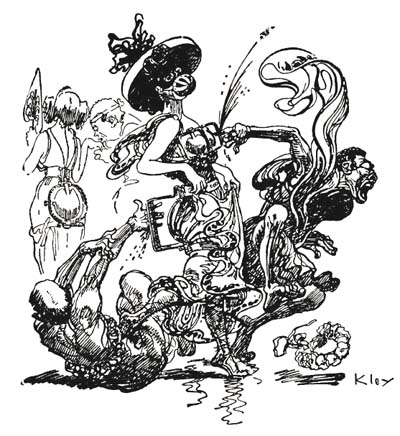
The greater the draftsman, the more the artist can suggest with the least number of pen strokes. He knows beforehand where each line will touch the paper and why. Each line and dot will convey large areas of figure or scene, and the true artist/draftsman can relate his imagination to the viewer. Add to this one other quality the rare attribute of satirical humor and you have one of the greatest draftsman of this century: Heinrich Kley. -Donald Weeks
It’s amusing that Heinrich Kley earned his college degree studying the “practical arts” when one considers the decidedly impractial nature of the artist’s most famous work. Although Kley’s technical prowess always set him apart, his early paintings of landscapes and still life subjects are nothing to write home about. It wasn’t until the turn of the 20th century –while Germany scrambled to catch up to the rest of the swiftly industrializing world– that Kley’s own work took some fascinating turns.
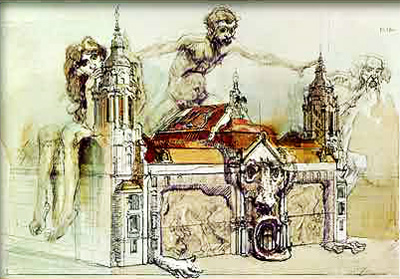
He embraced brute modern themes, rendering blast furnaces, scaffolding, dockyards and construction sites in meticulous oils and watercolors. He painted gorgeous architectural portraits of building exteriors all over the country and won several awards for his efforts. Often, his industrial landscapes were populated by enormous phantasmagoric beasts, as in his most famous work from that era, Tiegelstahlguss bei Krupp (Crucible Steel Casting With Krupp), which features Hephaestian giants working alongside ironsmiths in a warehouse.

In 1908, Kley moved to Munich. While he continued to make his living painting industrial machinery, he began pouring his heart and soul into hundreds of pen line drawings. Wicked, deliciously perverse drawings at that…
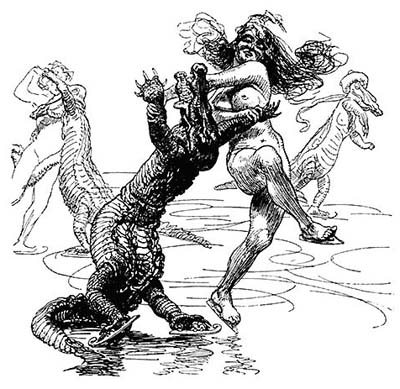
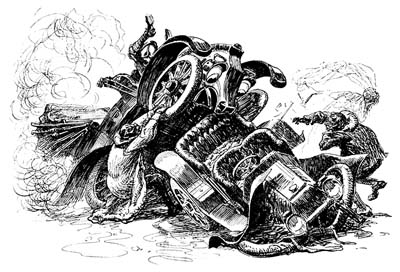
Published primarily in Jugend and Simplizissimus (a notorious satirical magazine of the day), many of these illustrations often seem to have been impatiently thrown onto the paper; they convey so much with so little. Kley had honed his draftsmanship to a sharp point. The darkly sarcastic, often titillating humor of his editorial cartoons brought him instant fame.
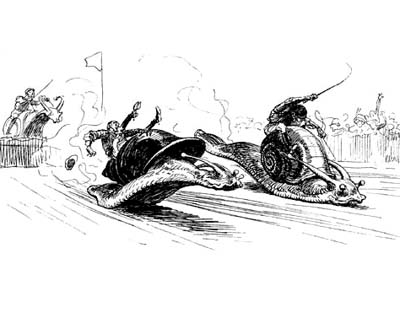
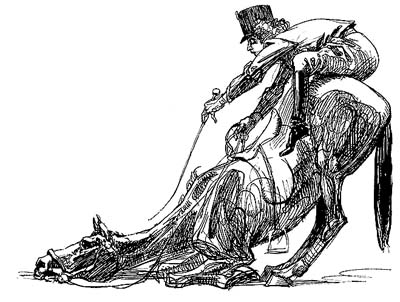
Watching the humanized antics of animals in Fantasia’s “Dance of the Hours” sequence and the grandly frightening gestures of the Chernabog from “Night On Bald Mountain”, one can clearly see Kley’s influence on Disney studio animators of that time. Disney himself amassed a large collection of the cartoonist’s work. Thanks to their homage, his work is better remembered here than it is in Germany today.
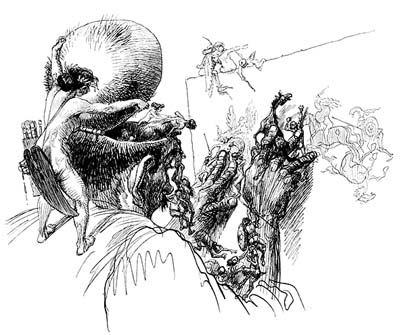
After ten years of inspired scribbling, he returned exclusively to commercial work and fell into obscurity. He lived in Munich through two world wars, and apparently died in the mid 1940s (although no one seems to be quite sure exactly when). Not much is known about the personal life of Heinrich Kley, but his impeccable illustrations remain timeless.

Editor’s note: In trawling the web for images to share in this post, it became clear that much is lost in the translation from print-sized lithograph to teensy wee low-res computer image. To get a real sense of the man’s talent, pick up a copy of The Drawings of Heinrich Kley.

December 15th, 2007 at 9:13 am
I love how artists of this period in Europe dealt with modernity before and after WWI in such different ways. The mix of fantasy with cold hard machinery is brilliant still.
December 15th, 2007 at 11:58 am
Eyegasms a’plenty.
December 15th, 2007 at 9:18 pm
I was introduced to Heinrich Kley by M. Preston Burns, an artist and cartoonist himself, see http://www.joyofkidding.com/bud/ for some of his work. He taught me a lot about the history of illustration, cartooning, and art. We’d go through the works of Thomas Nast, JD Leyendecker, James Montgomery Flagg, Bill Mauldin, Herblock, and others.
Glad to see that others are remembering Kley’s work still.